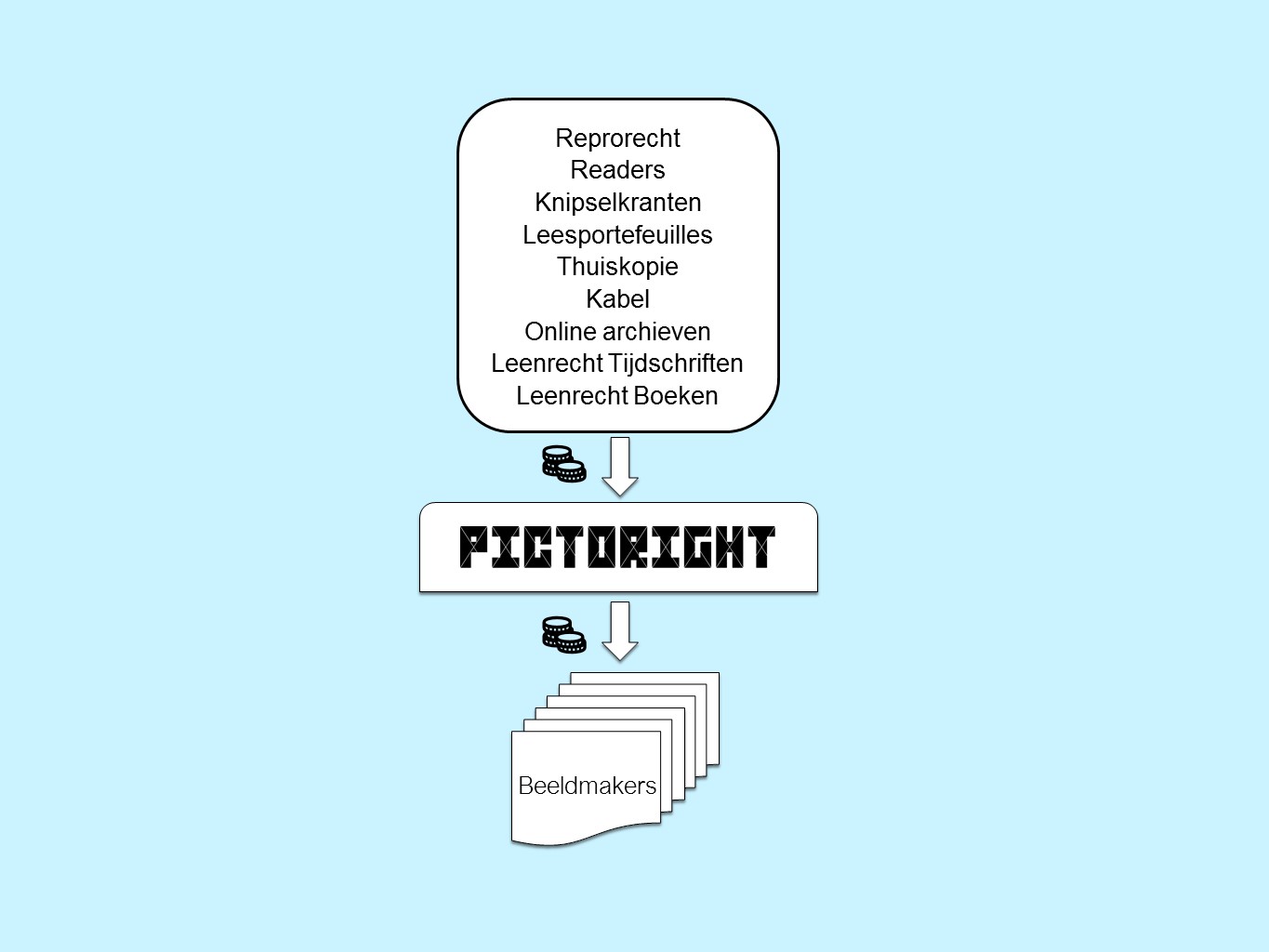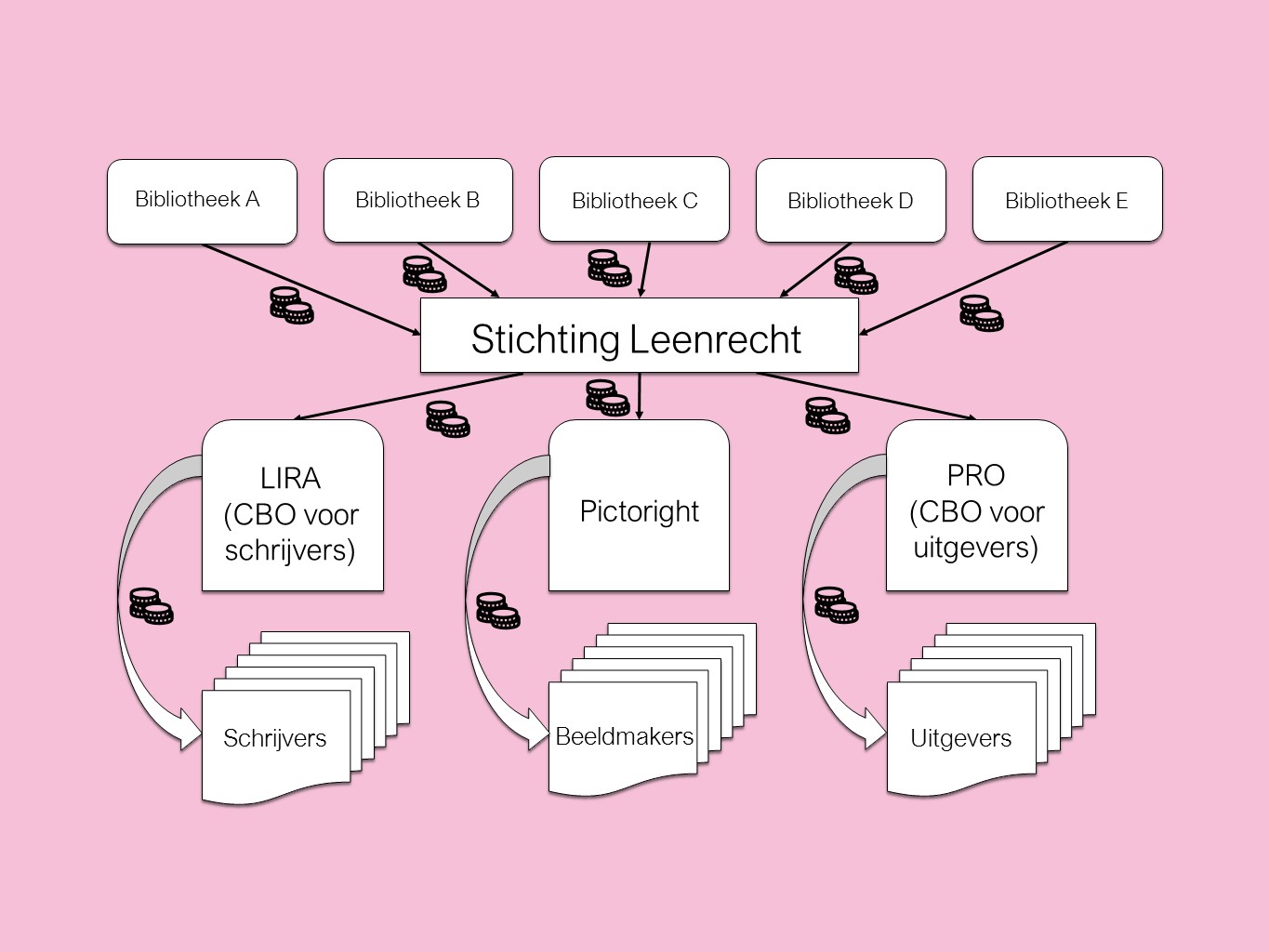The collection and distribution of collective rights: how does it work?
It is difficult to imagine the concept of 'collective rights', especially when it comes to their collection and distribution. The payments for, for example, reprography rights, private copy or lending rights are first received by Pictoright and then passed on to the authors. We do this on the basis of the information that visual artists give us about the publications that include their images. This is shown schematically below:

Let's take Lending Rights as an example. Libraries pay 13 cents per each lent book to Stichting Leenrecht. Based on the number of loans, the Stichting Leenrecht sends invoices to libraries. Many libraries also provide information on which books are being lent. Matching all the information shows an approximate number of times a book is lent, and what royalties are paid for that book.

Pictoright distributes these fees based on bases. Points are assigned to the work created: an image on the cover, for example, is worth more than an image in the interior.